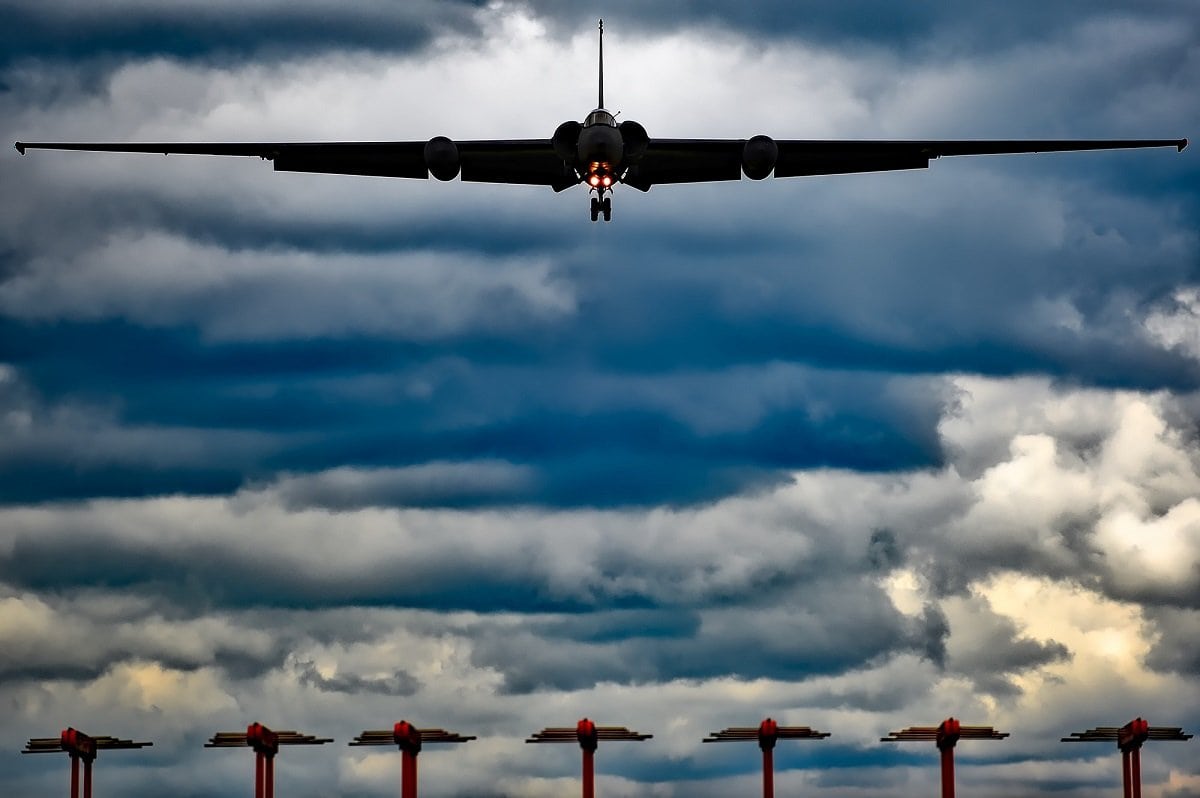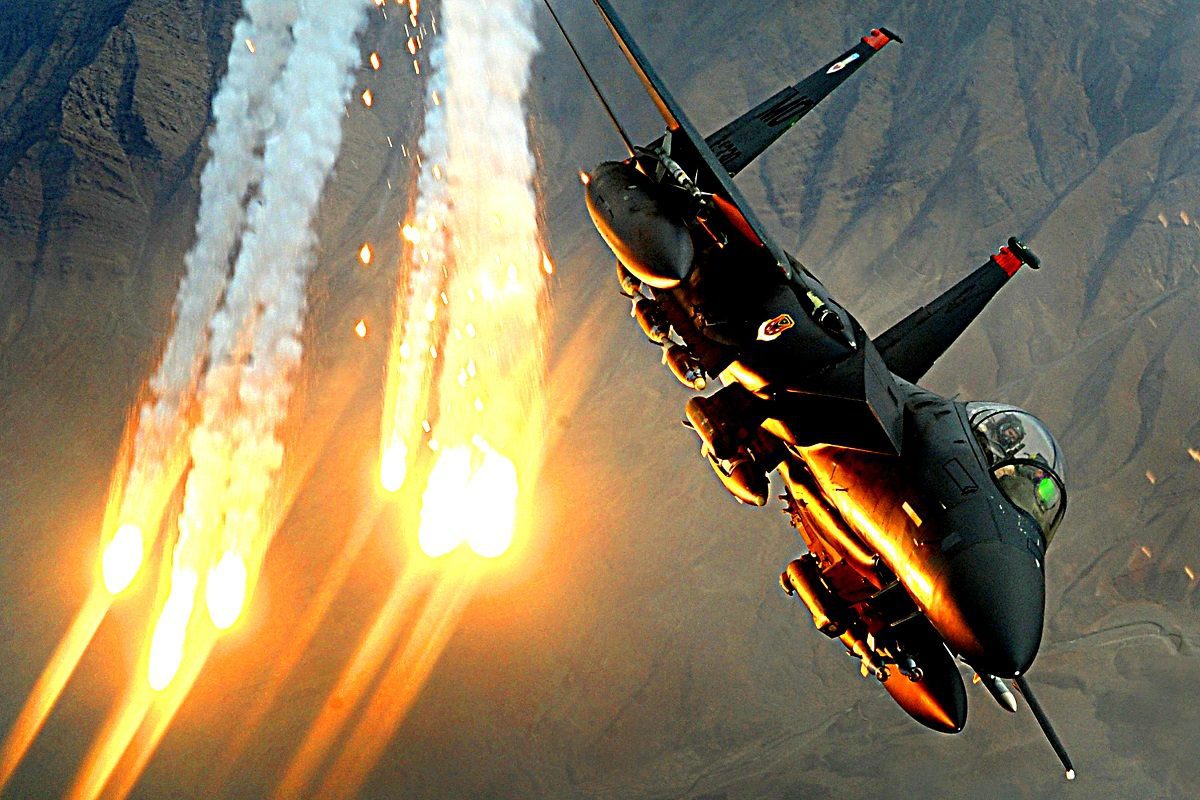The mighty US Navy aircraft carrier might just be the most powerful weapon to ever hit the high seas. And yet, not anything that has wings can fly from an aircraft carrier. And believe us, the US Navy thought up quite a few ideas to fly just about anything off these big and powerful flattops: The United States Navy operates some of the most capable planes ever to fly off the deck of a ship. But not every effort aimed at parking advanced aircraft on 4.5 acres of floating “Sovereign American territory” has resulted in success. In fact, Uncle Sam has tried to stick just about every fighter developed over the past 50 years on carrier duty… not to mention a spy plane or two.
Believe it or not, a number of planes you’d never have imagined have actually landed and taken off from the decks of American carriers, including the legendary U-2 Dragon Lady spy plane and even the absolutely massive C-130 Hercules!
The biggest planes ever to fly off of American carriers
1) James H. Flatley III flew a KC-130 off the deck of the USS Forestal?
While the modern Nimitz and Ford-class carriers don’t need to be fuelled for decades, they still require all sorts of supplies from land-based installations. These range from the usual stuff you need to support the more than 3,000 troops on board, to replacement parts for the aircraft that operate from the carriers’ flight deck.
So the Navy set out to find a way to get larger shipments out to carriers at sea without having to devise an expensive clean-sheet aircraft for the job. After a bit of consideration, a solution that was just crazy enough to work emerged: And that was to land Lockheed’s four-engine C-130 Hercules right on the deck of an aircraft carrier.
So, on October 3, 1963, then Lt. James H.Flatley brought his massive C-130 down onto the aircraft carrier with expert precision, missing the Forestal’s control tower with the edge of the plane’s wing by just 15 feet.
Two months before Flatley’s C-130 would make history with a landing on the Forrestal, Lockheed test pilot Bob Schumacher would carve his own name into the record books (albeit, secretly) by taking off from the deck of the USS Kitty Hawk in his U-2A.
On March 2, 1963, Schumacher was once again chosen to fly a newly renovated U-2. This time, he departed from a land-based airstrip with orders to land aboard the USS Ranger, a Forestall-class supercarrier sailing off the California coast.
Schumacher made a series of touch-and-go landings on the Ranger, coming down onto the deck and then throttling back up to get the U-2 back into the sky. Finally, he felt as though the conditions were right and the aircraft could manage the landing, so he made his final approach.
As he brought the U-2 down on the aircraft carrier, its new tailhook grabbed the cable, just as it was intended, but the rapid shift in momentum and weight pitched the tail upward, driving the nose of the plane into the deck and breaking its pitot tube (an instrument used to measure airspeed). The damage was minor and the team on board was able to repair the aircraft in just a few days.
The effort would culminate two months later when the first U-2 was launched from an aircraft carrier in an operational setting; its mission was to monitor French nuclear tests at Mururoa atoll, a test site in French Polynesia.

U-2 Dragon Lady Spy Plane. Image: Creative Commons.
Two reconnaissance flights were launched over three days without incident and with the French totally unaware. The mission was a success, but it would be the last time a U-2G would launch from a carrier for active operations.
Fighters the DoD tried to fly off of aircraft carriers
Vought 1600
The F-16 Fighting Falcon has been the U.S. Air Force’s workhorse fighter for more than 40 years, and at one point, it looked like a carrier-capable version would do the same for the U.S. Navy.
In order to meet the needs of the Navy, the Vought 1600 was larger than the F-16A. It stretched some three feet longer, with a 33-foot three-inch wingspan that was a full two feet broader than the Air Force’s version of the fighter. The breadth of the wings grew, covering a total of 269 feet and giving the aircraft better stability at lower speeds. The fuselage was flattened a bit and made broader, and its canopy was designed to pivot forward. Although this was different from the F-16, this design can now be found on the F-35.

U.S. Air Force Col. Mike Manning, the commander of the 169th Fighter Wing, and Col. David Meyer, the commander of the 169th Operations Group, both with the South Carolina Air National Guard, receive fuel from a KC-135R Stratotanker aircraft assigned to the 134th Air Refueling Wing, Tennessee Air National Guard while flying an F-16 Fighting Falcon aircraft over Eastover, S.C., Nov. 12, 2013. The F-16 was flown back to South Carolina from temporary duty at Nellis Air Force Base, Nev. (DoD photo by Tech. Sgt. Caycee Watson, U.S. Air National Guard/Released).

Image: Creative Commons.
In order to withstand carrier landings, heavier duty landing gear had to be affixed to the Vought 1600’s belly, alongside the standard carrier equipment like a landing hook. The fuselage itself was made stronger and in order to offer the engagement range the Navy needed, a pulse-doppler radar for beyond-visual-range targeting was also added.
All told, the structural changes needed to make the F-16 into the Vought 1600 added more than 3,000 pounds to the aircraft. Further changes were made to the fuselage and wings as subsequent iterations of the Vought 1600 came to fruition. The V-1602, for instance, had even more wing area at 399 square feet, and was given a heavier GE F101 engine.
The F-15N Sea Eagle
The F-14 Tomcat may be a legendary fighter that got the Hollywood treatment in 1986’s Top Gun, but for a short time in the 1970s, the Navy considered tossing the Tomcat in favor of flying the F-15 from its aircraft carriers instead.
In order to make the F-15 suitable for aircraft carriers, McDonnel Douglas knew the platform would have to be modified. The F-15A already had a tailhook, intended for use on short airstrips or in an emergency, but a carrier fighter needs to rely on its hook for every landing, so a larger reinforced hook was added to the design. To make for easier storage below deck on carriers, the wings would fold up at a 90-degree angle a bit more than 15 feet from each tip.

An F-15E Strike Eagle from the 391st Expeditionary Fighter Squadron at Bagram Air Base, Afghanistan, launches heat decoys Dec. 15 during a close-air-support mission over Afghanistan. (U.S. Air Force photo/Staff Sgt. Aaron Allmon)
The landing gear would also have to be swapped out for a more rugged set that could withstand the abuse of carrier landings on a rocking ship. McDonnell Douglas said they’d set about designing the new gear if the Navy wanted to move forward with the aircraft.
With these changes incorporated, the F-15 only gained a paltry 3,000 pounds. This, combined with better maneuverability, a higher top speed, and a much lower price, all made this new Sea Eagle sound like a pretty good deal. But there was one glaring shortcoming: Capable as the F-15N may have been, it couldn’t carry America’s latest and greatest air-to-air missile, the AIM-54 Pheonix.
NATF-22 Sea Raptor
The U.S. Air Force’s venerable F-22 Raptor is widely seen as the world’s most capable air-superiority fighter, but for a short time, it was nearly joined by a sister platform modified specifically for the Navy in the NATF-22.
The F-22 proved so capable that Congress pressed the Navy to consider adopting a sweep-wing version of the new fighter under the NATF (Naval Advanced Tactical Fighter) program that began in 1988. Had the U.S. Navy opted to pursue a carrier-capable variant of the F-22, there would have been a number of significant technical hurdles to overcome. Aircraft designed for carrier operations have to manage a very different set of take-off and landing challenges than their land-based counterparts.
The fuselage needs to be more physically robust to withstand the incredible forces applied to it during catapult launches and short-distance landings supported by a tailhook at the rear of the aircraft. Further, the NATF-22 would also have to leverage the same sort of variable-sweep wing approach found on the F-14 to grant the aircraft the ability to fly slowly enough to safely land aboard a carrier.

U.S. Air Force Maj. Paul Lopez, F-22 Demo Team commander, performs a high speed pass maneuver during the Fort Worth Alliance air show in Fort Worth, Texas, Oct. 19, 2019. Representing the U.S. Air Force and Air Combat Command, the F-22 Demo Team travels to 25 air shows a season to showcase the performance and capabilities of the world’s premier 5th-generation fighter. (U.S. Air Force photo by 2nd Lt. Sam Eckholm)

The US Air Force (USAF) F/A-22 Raptor, flown by USAF Major (MAJ) David Thole, 422nd Test and Evaluation Squadron (TES), Nellis Air Force Base (AFB), Nevada (NV), heads out to the Nevada Test and Training Range (NTTR) for an operational test mission.
It stands to reason that the variable-sweep wing design would compromise some degree of the aircraft’s stealth. If the connecting surfaces of the moveable wings produced a high enough return on radar to secure a weapons-grade lock on the aircraft, the value of such a fighter would be fundamentally compromised.
Further, the F-22 may be fast and maneuverable, but the Navy’s existing F-14 Tomcats were faster. Lastly, despite their high maintenance costs, the F-14 Tomcats were still significantly cheaper than building a new stealth fighter for the Navy’s flattops, even if it was borrowing heavily from the Air Force’s program.
Alex Hollings is a writer, dad, and Marine veteran who specializes in foreign policy and defense technology analysis. He holds a master’s degree in Communications from Southern New Hampshire University, as well as a bachelor’s degree in Corporate and Organizational Communications from Framingham State University. This first appeared in Sandboxx News.

